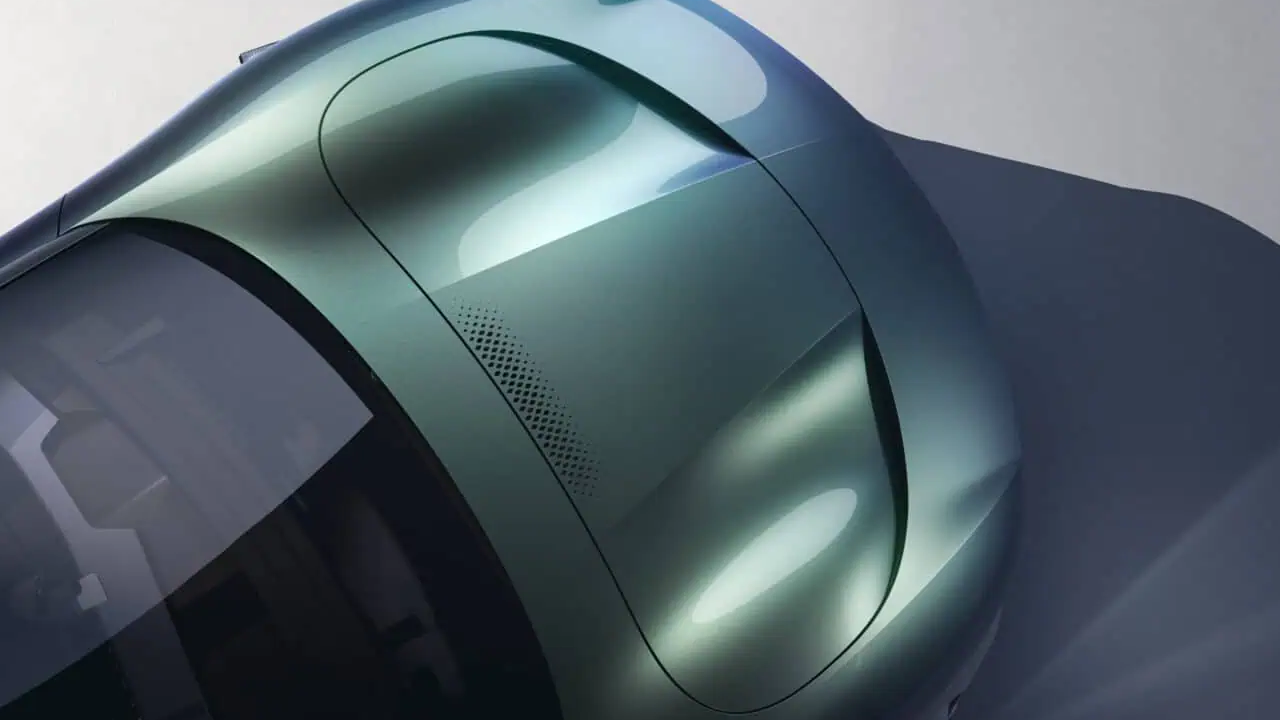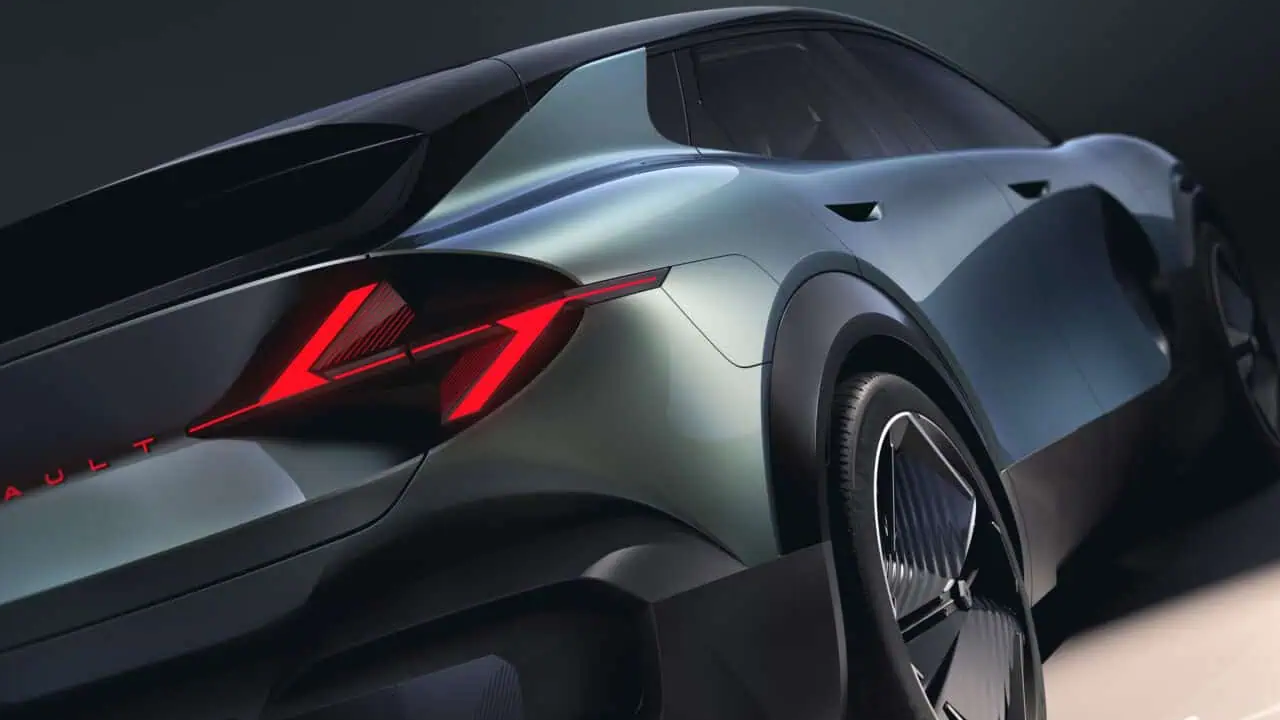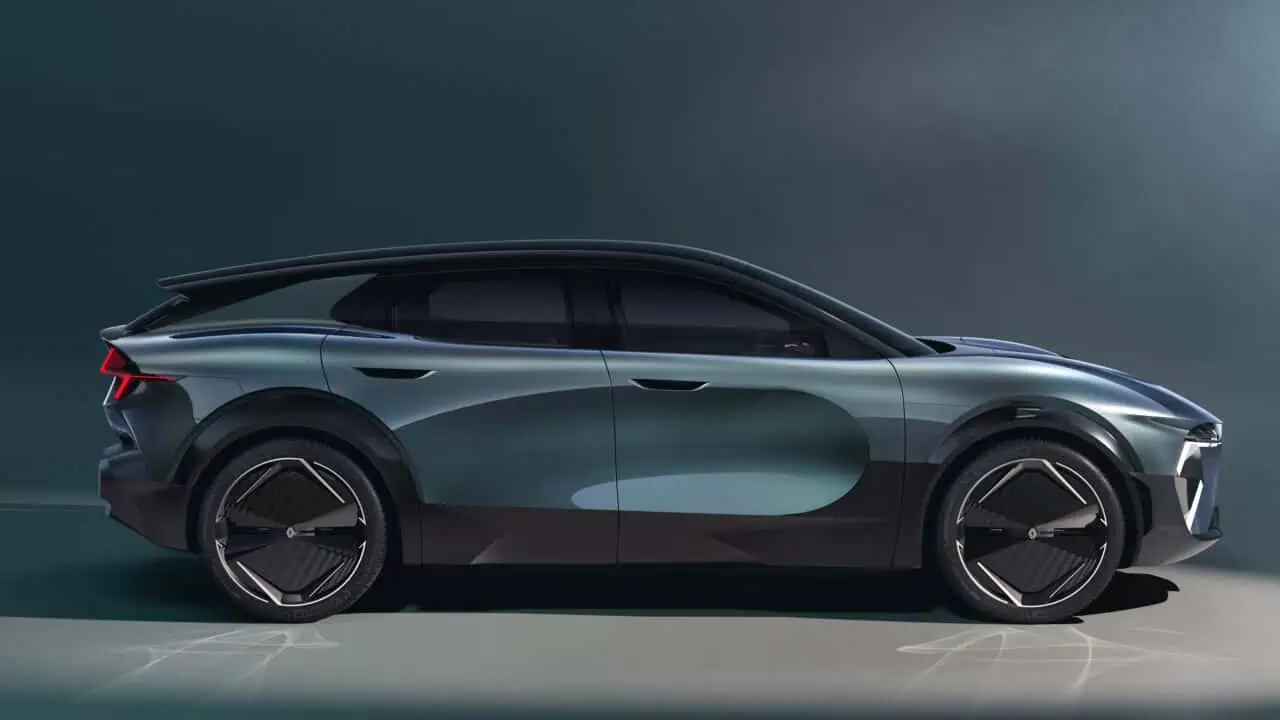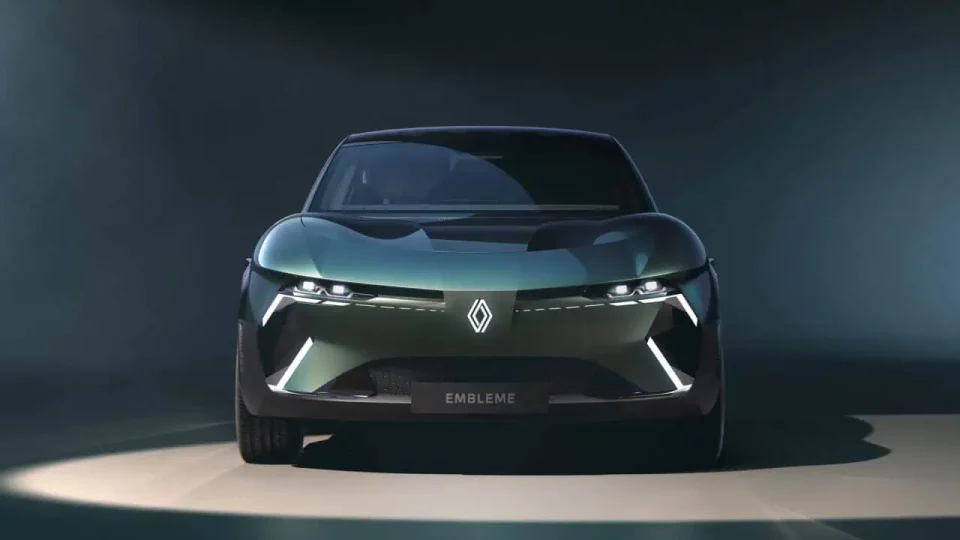Renault has unveiled the Emblème concept, an eco-friendly hydrogen hybrid shooting brake designed to slash carbon emissions dramatically. This vehicle represents an ambitious leap in the carmaker’s vision of a greener future, making strides toward its ultimate target of achieving net zero carbon by 2040 in Europe and by 2050 worldwide.
The Emblème is more than just a concept; it’s a statement of Renault’s future aspirations and dedication to environmental responsibility.
Table of Contents
A Comprehensive Approach to Life Cycle CO2 Emissions
Renault’s efforts are not solely focused on the emissions produced during a car’s usage phase. Instead, the company adopts a life cycle analysis approach to carbon emissions, evaluating the environmental impact from the moment raw materials are extracted to the time the car is recycled. This holistic view is key to understanding the broader implications of automotive emissions.
To provide some context, Renault’s analysis shows that a petrol-powered Renault Captur emits around 49 tonnes of CO2 throughout its life cycle. This figure includes all phases of production, use, maintenance, and end-of-life disposal, considering a lifespan of 200,000 kilometers. In contrast, Renault’s all-electric Megane E-Tech produces 24 tonnes of CO2 under similar life cycle considerations—a significant reduction but still room for improvement.
Enter the Renault Emblème: a revolutionary concept that promises a mere five tonnes of CO2 over its entire life cycle. This 90% reduction in emissions compared to the Captur is a testament to the intricate engineering and innovative technologies integrated into this vehicle. Such a significant cut in emissions raises a crucial question: what makes the Emblème so environmentally friendly?
A Hybrid Hydrogen Powertrain at Its Core

The answer lies in the Emblème’s unique hybrid hydrogen powertrain, a combination of cutting-edge technologies that help minimize carbon emissions while maintaining efficiency. Unlike conventional electric vehicles that rely solely on batteries, the Emblème features a dual energy system: a 215 horsepower electric motor and a hydrogen fuel cell.
The electric motor, notably devoid of rare earth materials, plays a major role in reducing the overall carbon footprint. Rare earth mining is resource-intensive and often associated with considerable environmental and ethical concerns, so avoiding these materials is a key step toward making the Emblème a more sustainable option.
The vehicle is equipped with a 40 kWh lightweight battery, contributing to its 217-mile range. The battery itself, while small compared to many other electric vehicles, has been optimized to strike a balance between energy density and weight, contributing to both lower energy requirements and enhanced vehicle efficiency.
The Emblème’s hydrogen fuel cell, paired with a 2.8 kg hydrogen tank, extends the vehicle’s range and reduces dependency on electricity alone. Hydrogen, when sourced from renewable energy, offers a clean fuel option, emitting only water vapor during operation. This addition means that the Emblème can travel long distances without compromising environmental sustainability, a critical factor in convincing more drivers to adopt eco-friendly vehicles without worrying about charging infrastructure limitations.
Design Innovations to Maximize Efficiency
Beyond the powertrain, Renault has meticulously designed the Emblème to reduce CO2 emissions through every aspect of its construction. The shooting brake body style is not just aesthetically pleasing but also designed for aerodynamic efficiency. This body style, combined with a flat floor, ensures that the vehicle’s drag coefficient is as low as 0.25. The lower the drag coefficient, the less energy is required to propel the car, leading to increased range and efficiency.
The use of aerodisc wheels and cameras instead of traditional mirrors further enhances the car’s aerodynamic properties. These innovative features help streamline airflow, reducing drag and thus minimizing the energy required to move the vehicle. The emphasis on sleek design elements goes beyond aesthetics; it’s all about ensuring that every curve and line of the Emblème contributes to its eco-friendly performance.

Renault has also focused on minimizing the vehicle’s weight. Although the Emblème is a substantial 4.8 meters in length and carries both a battery and a fuel cell, it manages to weigh only 1,750 kg. Renault claims to have “chopped out every superfluous kilogram” in pursuit of efficiency. This weight reduction is crucial to enhancing the performance and efficiency of electric and hydrogen powertrains, both of which perform better when they have less mass to move.
Material Choices and Production Techniques
To achieve such a significant reduction in life cycle emissions, Renault has also worked on the materials used and the manufacturing processes employed in the creation of the Emblème. The company collaborated with over 20 partners to explore innovative ways of decarbonizing the entire production process. This includes the use of natural and recycled materials in the vehicle’s construction, which significantly reduces the CO2 emissions associated with material extraction and processing.
Using recycled materials not only conserves resources but also decreases the energy required for material production. Renewable energy has also been a focus during the production of the Emblème, with Renault attempting to power as much of the manufacturing process as possible using clean energy sources. These efforts are part of Renault’s broader commitment to reducing the environmental impact of its production facilities.
Another key element in Renault’s approach is considering the reusability of vehicle components. This aligns with the principles of the circular economy, in which products are designed to be recycled or reused, reducing the need for virgin material extraction and minimizing waste. Renault aims for the Emblème’s parts to be repurposed at the end of the vehicle’s life cycle, further contributing to the five-tonne CO2 target.

The Challenges of Hydrogen Technology
While the Emblème’s hydrogen powertrain is promising, it’s worth considering the broader challenges associated with hydrogen as a fuel source. Hydrogen production, storage, and distribution are still major obstacles to the widespread adoption of hydrogen vehicles.
Currently, much of the hydrogen produced globally comes from natural gas in a process that emits carbon dioxide. For hydrogen to be truly eco-friendly, it must be produced using renewable energy, such as through the electrolysis of water powered by wind, solar, or other renewable sources. Scaling up renewable hydrogen production is a challenge that requires significant investment and technological advancements.
Another consideration is the infrastructure required for hydrogen refueling. Unlike electric charging stations, which have seen rapid growth in recent years, hydrogen refueling stations are still relatively rare. This lack of infrastructure is a barrier to the adoption of hydrogen vehicles, although companies like Renault are clearly banking on the development of this infrastructure in the coming years.
